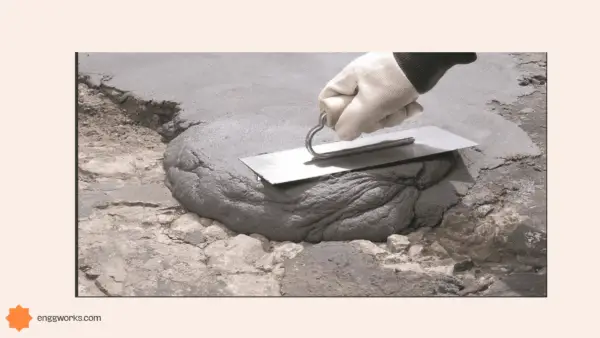The process of injection grouting, also referred to as permeation grouting or chemical grouting.
It entails injecting a low-pressure flow of grout into the pores, honeycombs, or cracks in concrete or masonry structural members.
In order to seal those cracks and strengthen the frayed or damaged concrete or masonry structural members.
The grout is typically a chemical mixture that reacts with the soil or water to create a gel-like substance that fills the holes.
It should shrink very little to completely cover the gap or cavities, and it should be stable without cracking, delaminating, or collapsing.
Concrete crack repair can be done effectively and affordably with injection grouting. To get the best results, good planning, execution, and quality control are necessary.

Factors Influencing Injection Grouting
- The type and size of the cracks, and their causes and effects on the structure.
- The type and properties of the grout material, and its compatibility with the concrete substrate.
- The injection equipment and technique, and the injection pressure and flow rate.
- The environmental conditions and safety precautions during the injection process.
- The curing time and post-injection inspection of the grouted cracks.
Applications of injection grouting
injection grouting is a versatile technique that can be applied to a wide range of construction projects to improve their safety, stability, and durability.
Here are some common applications:
- It is used for improving the bearing capacity , repairing foundation cracks and to stabilise sinking or settling foundations.
- Repairing cracks, voids, and other defects and strengthening damaged or deteriorated concrete structures, such as bridges, buildings, columns, beams, slabs, etc.
- Sealing water leaks and preventing soil permeability in dams, tunnels, basements, sewers, improves the stability of dams and reservoirs etc.
- Stabilizing and consolidating loose or weak soils and rocks, prevent erosion, and increase the load-bearing capacity of the ground.
- Injection grouting can be used to seal leaks in pipes, manholes, and other underground utilities.
- Injection grouting can be used to restore historical buildings by filling voids and stabilizing the foundation.
- Filling gaps and joints in precast elements, masonry walls, stone cladding, etc.
Injection grouting advantages
Improved stability
It can increase the stability and load-bearing capacity of soil, rock, or concrete by filling voids and cracks, and consolidating the material.It can restore the original strength and stiffness of the structure without altering its appearance or dimensions.
Water sealing
It can be used to seal leaks in underground structures such as tunnels, dams, and basements, by injecting a water-resistant material into the cracks and voids.It can reach inaccessible areas or small openings that are difficult to repair by other methods.
Cost-effective
It can be a cost-effective solution compared to other methods of repair or reinforcement, as it can be completed quickly with minimal excavation.
Minimal disruption
It does not require major excavation, which means that it can be completed with minimal disruption to the surrounding environment or structures.
Customizable
It can be customized to suit the specific requirements of each project by selecting the appropriate material and injection method.
Injection grouting disadvantages
limited penetration
It may not be effective for deep-seated voids or cracks, as the fluid material may not penetrate to the required depth.
Lack of visibility
Injection grouting is a blind process, which means that it can be difficult to determine the effectiveness of the grouting, and to ensure that all voids and cracks have been filled.
Risk of damage
Injection grouting may cause damage to existing structures or utilities, especially if the injection pressure is too high or grout material is incompatible with the substrate.
Environmental concerns
Injection grouting materials may contain hazardous chemicals that can pose a risk to the environment if not handled properly.
Time-consuming
Injection grouting may require multiple injections to achieve the desired results, which can make the process time-consuming and costly.

It may not last long if the root cause of the cracking or deterioration is not addressed or eliminated.
FAQ – Injection Grouting
What are the types of injection grouting?
Depending on type of the soil , structural conditions and the grout material used injection grouting is of several types
Chemical grouting
Epoxy grouting
Cement grouting
Permeation grouting
Bentonite grouting
Polyurethane Grouting
Where injection grouting is required?
It is used for structural repair, waterproofing, sealing and soil stabilization. It can also be used in tunneling and mining operations to prevent ground movement and subsidence.
What is the grout material for injection grouting?
The grout mixture is usually a polyester, epoxy, vinyl ester, polyurethane, sodium silicate, urethane, and acrylic resins.






